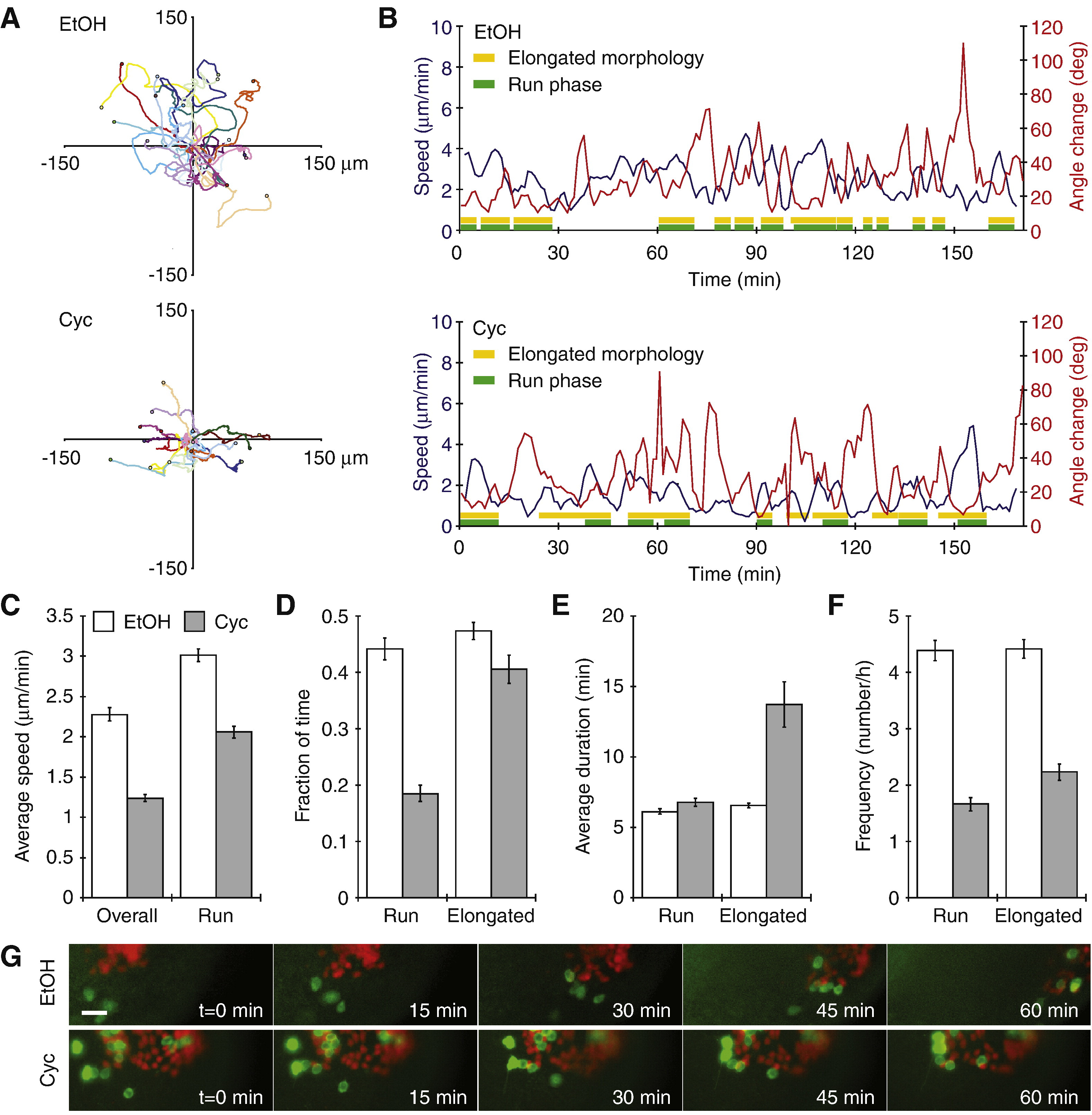Fig. 3 Cyclopamine decreases PGC motility without disrupting chemotaxis. (A) Fifteen 100-min tracks of EGFP-expressing PGCs in Tg(kop:EGFP-F-nanos1-3′UTR) embryos treated with either ethanol or cyclopamine starting at the one-cell stage. PGC migration was followed during late gastrulation and early somitogenesis (8 to 12 hpf); the beginning of each track is set at the origin and the end of each track is indicated by a black-edged circle. (B) Representative migratory behavior of individual PGCs in ethanol- or cyclopamine-treated embryos over a similar time frame. Speed and vectoral changes are depicted by the blue and red lines, respectively. Time frames during which the PGCs exhibit an elongated morphology are indicated by the yellow bars, and run phases are indicated by the green bars. Note that run phases in embryos treated with the ethanol vehicle control usually coincide with periods of maximum speed and minimum angle changes. (C) Average speeds of PGC movement over the entire imaging period or during run phases. (D) Fraction of time, (E) average duration, and (F) frequency of PGC run phases or elongated morphological states in ethanol- or cyclopamine-treated embryos. Data in panels C–F are the averages of 35 ethanol-treated and 45 cyclopamine-treated PGCs, and error bars represent the standard error of the mean. (G) Chemotaxis of EGFP-expressing PGCs (green) toward transplanted Sdf1a-expressing cells (red) in ethanol- or cyclopamine-treated embryos. Scale bar: 50 μm.
Reprinted from Developmental Biology, 328(2), Mich, J.K., Blaser, H., Thomas, N.A., Firestone, A.J., Yelon, D., Raz, E., and Chen, J.K., Germ cell migration in zebrafish is cyclopamine-sensitive but Smoothened-independent, 342-354, Copyright (2009) with permission from Elsevier. Full text @ Dev. Biol.

